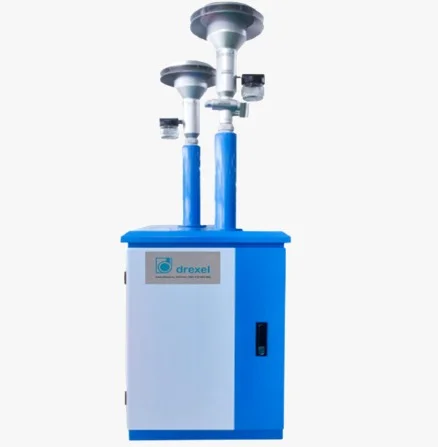Continuous Ambient Air Quality Monitoring Analyzer
Drexel equipment use to monitor Ambient Air Quality Monitoring System Analyzer in Residential area, Industrial area, Mining pits, Oil extraction, Construction sites, etc. After monitoring the status of Air quality the real time data send to the server to keep under continues surveillance and also the data is stored on cloud server for future records. Drexel manufactures system as per the Government guidelines and also records the historical data on the cloud server. Drexel have extensive experience in the Manufacturing, Operation and Maintenance of Ambient Air Quality Monitoring System Analyzer.
- PM2.5 , PM10 (Beta Ray Attenuation Method /Light Scattering )
- Carbon monoxide (CO) – Non –dispersive Infrared Spectrum technology / Electrochemical
- Nitrogen dioxide (NO2) -Chemiluminescence method / Electrochemical
- Nitric oxide (NO) -Chemiluminescence method / Electrochemical
- Nitrogen oxides (NOX)- Chemiluminescence method / Electrochemical)
- Ozone (O3) –UV photometric absorption technology/Electrochemical
- Sulphur dioxide (SO2) - Ultraviolet Fluorescence method/ Electrochemical
- Hydrogen sulphide (H2S)
- Dynamic Calibrator (with Ozone Generator), etc
Parameters we measures

Features:
- The measured data can be remotely monitored and exported in various formats to the local central authorities. The data can be published via the Internet for easy public access to raise awareness on current air pollution levels. This way, the public can prevent outdoor activities and reduce health impacts during heavy polluted days. Drexel manufacture Ambient Air Quality Monitoring System Analyzer for Canada.
- Latest and updated technologies use.
- System can be customizing as per the customer requirement.
- System has inbuilt provision to add parameters.
- Compliance with government norms.
- Data available on cloud server and can be viewed remotely from any location
The main objective of these Networks is to record the concentration levels of atmospheric pollutants in order to define air quality levels and establish action plans if high levels of contamination are detected. Drexel Group setup Ambient Air Quality Monitoring System Analyzer in Canada.
Other objectives are:
- Locating contamination problem areas and understanding their space-time changes.
- Complying with atmospheric air protection legislation
- Obtaining the necessary information to define Action Plans as stipulated by Environmental concerns.
- Informing citizens regarding local air quality status.
Article
